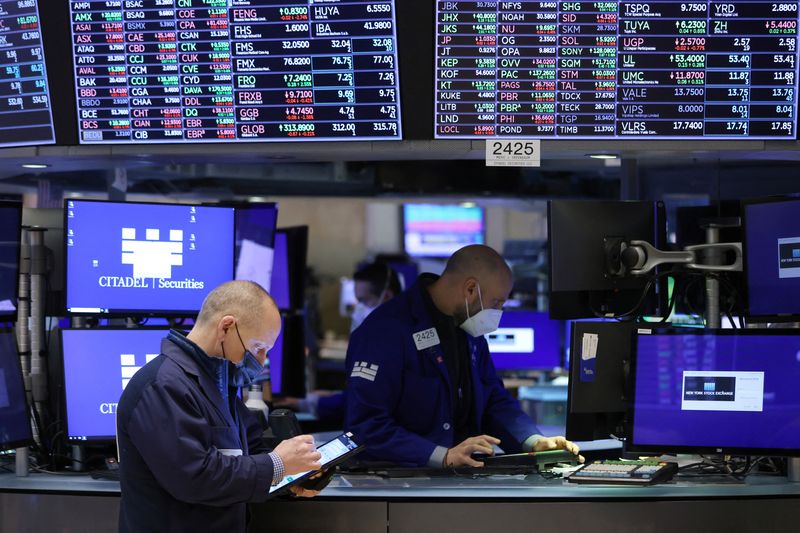 © Reuters
© Reuters
By Yasin Ebrahim
Investing.com – The S&P 500 stuttered Wednesday, as the run-up in tech stocks paused following weakness in chip stocks as investors continued to watch developments in Ukraine and Federal Reserve officials calling for a faster pace of rate hikes.
The S&P 500 fell 0.8%, the Dow Jones Industrial Average slipped 0.45%, or 157 points, the Nasdaq fell 1.2%.
Chip stocks fell more than 2% to weigh on the broader tech sector, pressured by a weakness in Qualcomm (NASDAQ:QCOM) and Micron.
Micron Technology (NASDAQ:MU) fell more than 2% as better than expected second-quarter results and third quarter guidance were offset by worries about slowing growth amid an unfavorable macro environment.
“Investors concerned about inflationary risk and consumer wallet will likely view strong results skeptically,” Credit Suisse said in a note..
Consumer discretionary stocks, which in tandem with tech have underpinned the recent rebound, also stumbled.
PVH (NYSE:PVH) was the biggest sector decliner down more 6% after its softer than expected guidance offset quarterly results that beat Wall Street expectations on the bottom line.
Mohawk Industries (NYSE:MHK) was also big a drag on the sector, down more than 4% after JP Morgan downgraded the building product firms to underweight, on worries about several headwinds including a slowing housing market amid tighter monetary policy.
Bond markets, meanwhile, continued to be closely watched, a day the after a key part of the yield curve inverted, triggering worries about a recession ahead amid fears the Federal Reserve may tightened too aggressively and tip the economy into a recession.
Those worries remained front and center on Wednesday as Fed officials continue to call on the central bank to pick up the pace of tightening to curb inflation at time.
“Given the state of the economy, with inflation at a 40-year high and the unemployment rate near record lows, moving expeditiously to a neutral stance of policy is appropriate,” Kansas City Fed President Esther George said on Wednesday.
The 10-2 year treasury yield spread, which turned negative briefly turned negative a day earlier, continued to flirt with inversion. The spread on the 10-year Treasury, which briefly dipped below the yield on the 2-year Treasury for the first time since 2019, continued to flirt with inversion again.
The Fed has said the economy is strong enough to withstand the pace of expected tightening. Economic data on Wednesday was mixed as private jobs gains in April surprised to the upside but economic growth, or GDP, in the fourth quarter was unexpectedly revised down a tenth of a percentage point to a 6.9% increase.

